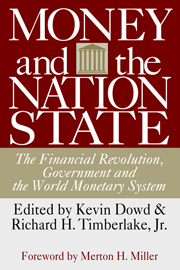Phil Gramm and Thomas R. Saving introduce their op-ed “How the Fed Is Hedging Its Inflation Bet” (Aug. 2) by stating a fact: “The growth of the M2 money stock fell from around 25% in 2020 to around 10% on an annualized basis in the first six months of 2021.” They then proceed to explain that this deceleration has occurred because the Fed has been able to drain “almost a trillion dollars of liquidity out of the financial system” since April via its reverse-repurchase facility. Their argument rests on faulty theory and doesn’t hold water.
The notion that a trillion dollars in reverse repos has reduced the money supply by even one dollar is nonsensical. Reverse repos are a liability of the Fed and an asset of the banks and money-market mutual funds (MMMF) that loan funds to the Fed via reverse repos. Deposit liabilities of both banks and MMMFs are constituents of the money supply. These liabilities remain unaffected by the choice banks and MMMFs make about whether to place their assets in the Fed’s reverse-repo facility, Treasury bills or elsewhere. Contrary to the Gramm-Saving analysis, the Fed’s reverse-repo program has no effect on the money supply.











